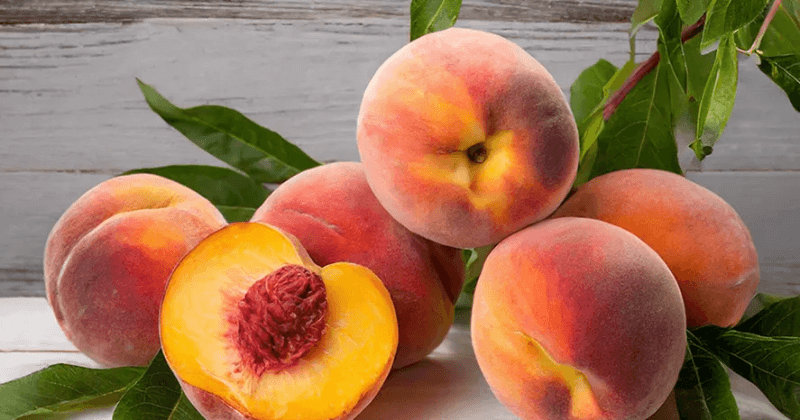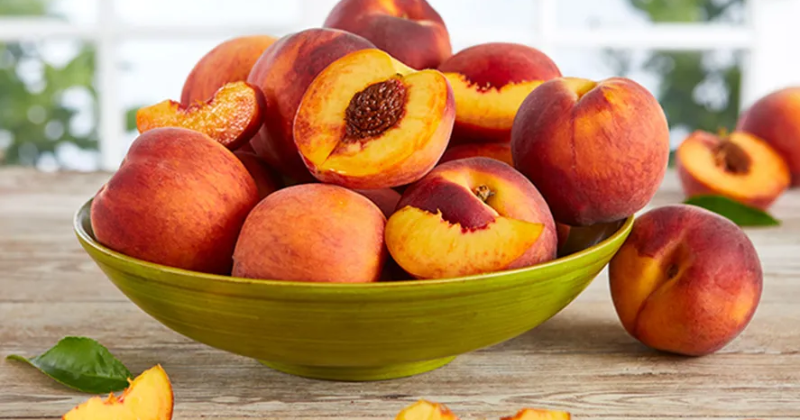There is nothing quite like biting into a fresh, juicy peach grown straight from your backyard. Store-bought peaches often lack the sweetness and texture of homegrown varieties, making it worth the effort to cultivate your own peach grove. With the right techniques and care, you can enjoy an abundant harvest of delicious peaches every season. Below are ten essential tips to ensure your peach trees thrive and produce high-quality fruit.
1. Choose the Right Peach Variety
Not all peaches grow well in every climate. Selecting the right variety for your region is crucial for a successful harvest. Some popular options include:
- Freestone Peaches: Easier to pit and great for fresh eating.
- Clingstone Peaches: Juicier and ideal for preserving and canning.
- Dwarf Varieties: Perfect for small gardens and container growing.
Check with your local agricultural extension or nursery to determine the best varieties for your area.
2. Select an Ideal Planting Location
Peach trees require full sun—at least six to eight hours per day—to thrive. The best location should also have:
- Well-draining soil to prevent root rot.
- Protection from strong winds.
- Slightly elevated ground to avoid frost pockets.
Internal Link: Best Soil for Fruit Trees
3. Prepare the Soil Properly
A thriving grove begins with nutrient-rich soil. Before planting, test your soil’s pH, aiming for a slightly acidic range between 6.0 and 6.5. Enhance soil quality by:
- Adding compost or well-rotted manure.
- Mixing in organic matter to improve drainage.
- Avoiding overly clay-heavy soil, which can hinder root growth.
4. Plant at the Right Time
The best time to plant peach trees is late winter or early spring while they are still dormant. This allows the tree to establish its roots before the growing season begins. Ensure the planting hole is twice as wide as the root ball but no deeper than the tree’s original nursery depth.
5. Watering for Optimal Growth
Consistent watering is essential, especially for young trees. Peach trees need approximately one inch of water per week, either from rainfall or irrigation. To maintain proper moisture levels:
- Use mulch around the base to retain moisture and regulate soil temperature.
- Avoid overwatering, which can lead to root diseases.
- Water deeply rather than frequently to encourage strong root development.
6. Fertilize Strategically
Providing the right nutrients ensures a thriving peach grove. Apply a balanced fertilizer (such as 10-10-10) in early spring and again after fruit set. Key fertilization tips include:
- Avoid over-fertilizing, which can lead to excessive foliage growth at the expense of fruit production.
- Incorporate organic compost annually to boost soil fertility.
- Apply fertilizers around the drip line rather than directly at the trunk.
7. Prune Annually for Healthy Growth
Regular pruning keeps your peach trees healthy and productive. The best time to prune is late winter before new growth begins. Key pruning techniques include:
- Removing dead, diseased, or overcrowded branches.
- Shaping the tree into an open center structure to allow light penetration.
- Cutting back excessive vertical growth to focus energy on fruit production.
8. Protect Against Pests and Diseases
Peach trees are susceptible to pests like aphids, borers, and scale insects, as well as diseases such as peach leaf curl and brown rot. Protect your trees by:
- Using neem oil or insecticidal soap for natural pest control.
- Applying dormant oil spray in winter to prevent overwintering pests.
- Practicing proper spacing and pruning to improve air circulation.
9. Thin Fruits for Better Quality
While it may seem counterintuitive, thinning peach fruits ensures better quality and size. Once peaches reach about the size of a dime, remove excess fruits so that remaining peaches are spaced 6–8 inches apart. This prevents overcrowding and improves flavor and texture.
10. Harvest at Peak Ripeness
Peaches do not continue to ripen after being picked, so timing is crucial. To determine ripeness:
- Gently squeeze the fruit—it should have slight give.
- Check for a deep golden-yellow background color.
- Twist the peach slightly; it should come off easily from the tree.

Enjoy your peaches fresh, in desserts, or preserved for later use.
FAQ
1. How long does it take for a peach tree to bear fruit?
Most peach trees begin producing fruit within 2 to 4 years after planting, depending on the variety and growing conditions.
2. Can I grow peaches in a container?
Yes, dwarf peach tree varieties are well-suited for container gardening. Ensure the pot is at least 18–24 inches in diameter and provides proper drainage.
3. What is the best way to store fresh peaches?
Peaches should be stored at room temperature until ripe. Once ripened, they can be refrigerated for up to a week or frozen for long-term storage.
Conclusion
Growing your own peach grove is a rewarding experience that allows you to enjoy superior-quality fruit straight from your garden. By selecting the right variety, maintaining healthy soil, watering appropriately, and managing pests and diseases, you can cultivate a thriving grove for years to come. Start implementing these tips today, and soon you will be enjoying homegrown peaches that far surpass anything from the store.
